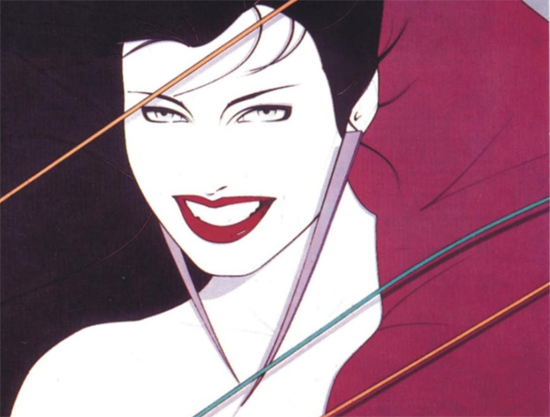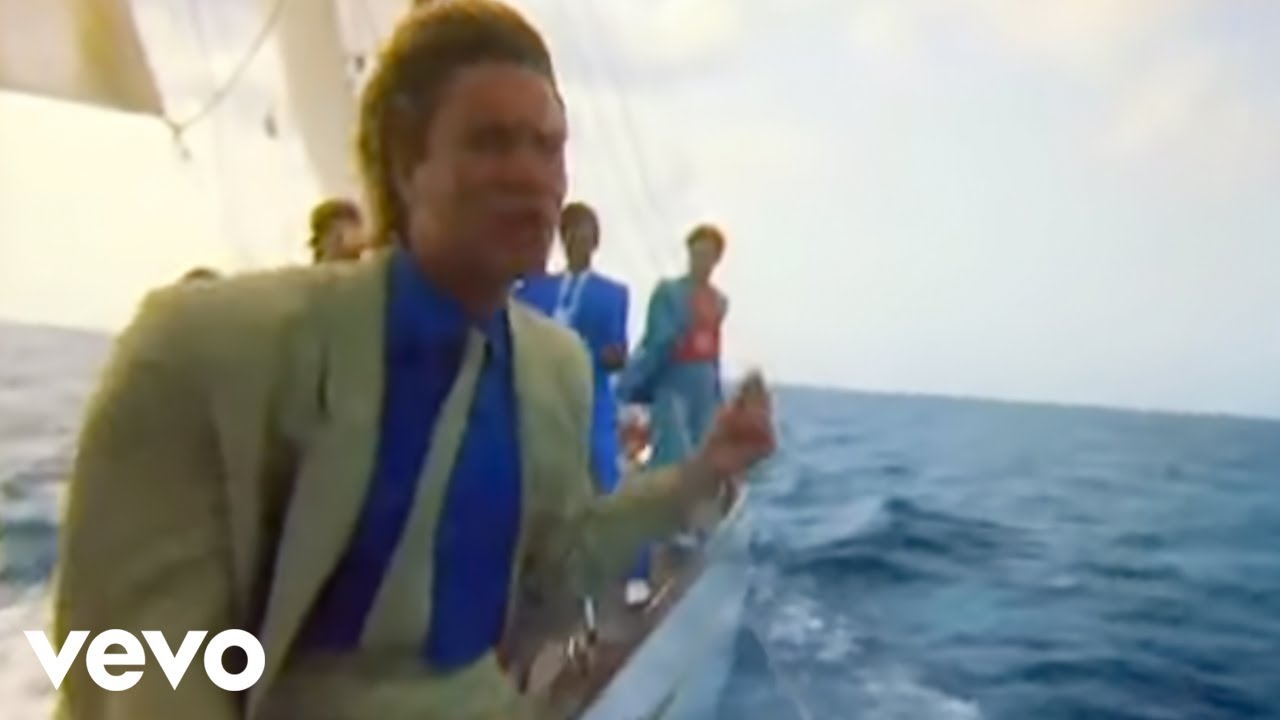It’s the winter of 1982 and I’m having an argument with my father about music. We are discussing which is the better band – The Beatles or Duran Duran. My dad, having lived through the 60s as a young man, is maintaining that the Fab Four are the greatest group ever, due to an unrivalled cannon of classic songs and their cultural impact across the globe. However, my 12-year-old self has spotted a weak point in his line of reasoning. Duran Duran had better videos. The Beatles never made an Indiana Jones-style promo video like Duran’s ‘Hungry Like The Wolf’, or pissed about on yachts in the Caribbean à la ‘Rio’. I delivered my counter-argument with rapier speed. My dad just sighed and muttered something about how he’d remind me of this discussion "when you are 18 and trying to be a too-cool-for-school."
My old man was always onto a loser with that particular debate. Back then I was heavily into Duran Duran. While their early singles ‘Planet Earth’ and ‘Girls On Film’ had spiked my attention amid my developing relationship with Japan, The Human League and, cough, Visage, it was Duran’s Rio album that had truly won my pre-teen heart. Thirty years on, Rio encompasses all anyone needs to know about Duran Duran. A cursory listen might actually cause the holier-than-thou Olympic gig snobs to reconsider. In 2012, records like Rio are herded away into the hinterland of arty indie backwaters (the likes of Clock Opera, Simian Ghost or Theme Park would sell their grandmothers to write a song like ‘Save A Prayer’). In 1982, Rio ruled the world.
Duran Duran were, perhaps, the UK’s last proper pop group. They were not a manufactured boy-band or the by-product of a marketeer’s spunk-filled brainstorming meeting. Duran Duran wrote their own songs, played their own instruments and decided – rather thrillingly – to see what might happen if someone mixed the sounds of Blondie, Gary Numan, disco and punk. Indeed, in 1979, on hearing Sex Pistols and Chic back-to-back on a pub jukebox, John Taylor’s immediate thought was "I love both these songs, why can’t we fuse the two?"
Formed in Birmingham in 1978 by Nick Rhodes and John Taylor, Duran’s classic line-up took a few months to align. The two friends were eventually joined by drummer Roger Taylor, Wearside-born guitarist Andy Taylor and, after a number of short-lived vocalists including Stephen Duffy, the gregarious and cocksure Simon Le Bon. By then, Duran were effectively the house band for Brum’s legendary Rum Runner nightclub, which rivalled London’s Steve Strange-hosted Blitz during the New Romantic era.
From the start, Duran Duran wanted to be mightily, unapologetically successful. They dreamed of playing gigs at Madison Square Garden in New York and craved being the biggest pop band on the planet. In 2012, such naked ambition is frowned upon by serious music fans. But, perhaps, people should be careful what they wish for – we live in a world in which One Direction rule the pop roost and earnest chamber-rockers Arcade Fire sell out huge arenas as the planet’s Most Proper Band – with very little in between. Personally, I think there is still room for a mountain of cocaine, a smattering of supermodel wives and Duran’s ‘The Chauffeur’ blaring out as a beacon for Planet Pop.
Rio was released on May 10th 1982. At that point, Duran Duran were well on their way to superstardom, but it was the album’s trio of super singles that jettisoned them into the major league. ‘Hungry Like A Wolf’ was, perhaps, the perfect concoction of the sonic harmony at play within Duran. Andy Taylor’s fiercely-taught guitar chops are neatly betrothed to Nick Rhodes’ rollicking synth line, while Simon Le Bon delivers a typically eager-beaver vocal. And, if the title-track was pure pop containing a hook as wide as their "cherry ice-cream smiles," it was ‘Save A Prayer’ that marked Duran Duran out as musicians with serious intent; over a gorgeous swirl of electronica, a lush proto-ballad developed into a seminal pop song.
Duran Duran’s cultural timing was also bang on. With MTV beginning to flex its muscles, the band ensured each song came with a lavish promotional video. I grew up in the Old Trafford area of Manchester and in 1982, while not exactly a Lowry landscape, it was hardly a hotbed of global sophistication. Some of our back streets were still cobbled and the most exotic place I’d encountered was the local Chinese restaurant. One Saturday morning, I caught sight of the ‘Hungry Like A Wolf’ video on a children’s TV show. It blew my mind.
The video had been shot in Sri Lanka but could have been made on frigging Jupiter for all I knew. It looked incredible. The subsequent ‘Save A Prayer’ promo included clips of the band riding elephants and the ‘Rio’ video looked like the best fun I was never going to have. It was all escapist nonsense, but I’d lived a mile away from the 1981 Moss Side riots and while The Specials’ ‘Ghost Town’ was a magnificent monochrome soundtrack, I was desperate for some garish, fun-riddled colour.
The music on Rio was birthed with a minimum of fuss. Largely recorded in the early months of 1982 at Air Studios in London, and with Colin Thurston wearing both producer and engineer hats, the main body of songs had been preceded by the spiky New Wave pop of ‘My Own Way’, a track that was subsequently remodelled for inclusion on the album. The iconic cover artwork was a Patrick Nagel cartoon of a Latin model with her own cherry ice-cream smile and reeked of effortless style.
While the hits on Rio blasted Duran Duran into the hearts of American teens, the album also includes the band’s best known non-single – and, perhaps, finest ever song – ‘The Chauffeur’. With lyrics taken from poems Simon Le Bon had written at the time of auditioning for the band, ‘The Chauffeur’ is a sublime mix of plucked melodies set to an almost orchestral arrangement. It’s an incredibly grown-up song for a supposed pop band and remains steadfastly timeless. Elsewhere, John Taylor’s Bernie Edwards-inspired bassline propels the white-funk of ‘New Religion’, while ‘Hold Back The Rain’ picks a perfect path between post-punk, New Wave and stadium-ready pop. Even better was the downbeat, guitar-driven ‘Lonely In Your Nightmare’, which showcased Andy Taylor’s rapidly developing technique.
Post Rio, Duran Duran’s became truly global superstars. Both ‘Is There Something I Should Know?’ and ‘The Reflex’ reached the top of the Hit Parade, but tensions were already beginning to creep into the band. Spiralling drug use, a ludicrously lavish rock star lifestyle and the pressure of topping the success of Rio, meant 1983’s Seven And The Ragged Tiger was an awkward, overblown beast. After the brilliant ‘The Wild Boys’ single, Duran Duran split into two side-projects; Le Bon and Rhodes formed the faux art-pop of Arcadia, while John and Andy Taylor joined forces with Robert Palmer and Tony Thompson to form the rockier Power Station. Roger Taylor, perhaps hedging his bets, drummed for both. At my school, you were encouraged to take sides. I chose Arcadia and swore never to admit such folly. Not in writing, at least.
When Roger Taylor decided to quit in 1986, the Fab Five lineage was broken. Duran went through a number of incarnations with moderate success and scored a global hit in 1993 with ‘Ordinary World’. In 2001, the classic line-up reformed and enjoyed the fruits of their legacy, with artists such as Beck and Franz Ferdinand frothing about Duran’s influence. It’s hard to listen to The Killers debut album and not believe Brandon Flowers must have studied Rio long and hard.
However, as the snobbery directed towards the band in light of the Olympic gig announcement demonstrates, the success of Duran Duran in the early-to-mid 80s has since been denigrated by the neatness of cultural revisionism. The band’s image was interpreted in certain quarters as a vulgar flash of Thatcherite greed and being Princess Diana’s favourite pop group didn’t exactly help Duran Duran distance themselves from the establishment.
Personally, I always believed the view of Duran as ostentatious rich kids was both factually incorrect and sociologically naive; this was a band made of largely working-class lads who all, except Simon Le Bon, had grown up experiencing the social deprivation common to Northern cities at the time. Le Bon claimed that all they wanted to do was make music "to dance to when the bomb dropped" and however cheese-laden his choice of words were, it epitomised their mission statement. Duran Duran were a band who wanted to reach out to as many people as possible and provide them with a few minutes of escape. Christ knows how much we could do with such an ideology in 2012.




